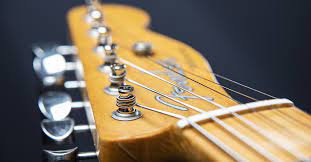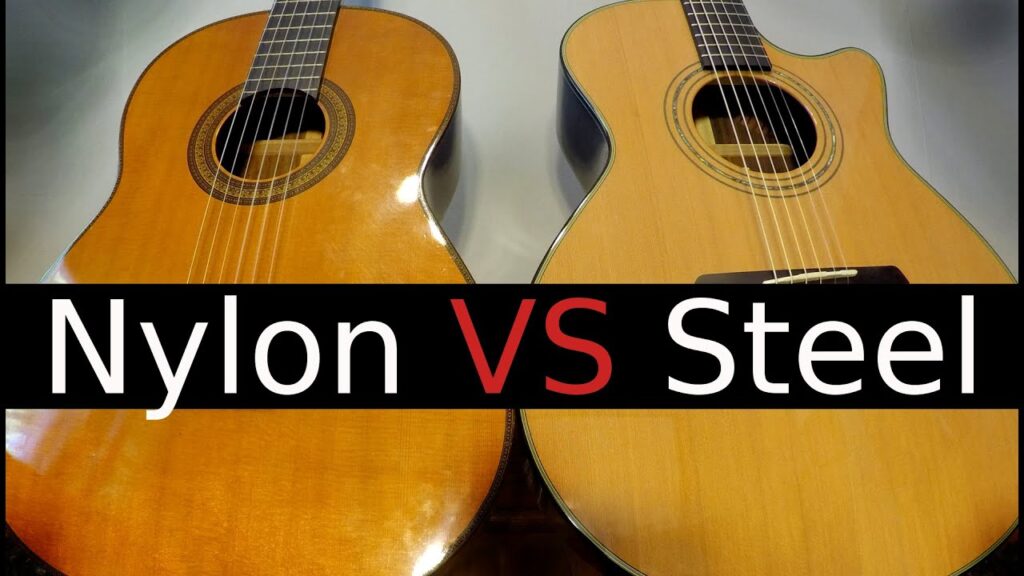There are different types of guitar strings that different guitar players can use, and what are guitar strings made of is one question this post is out to address. You should know how these strings affect a guitarist’s playing style and how they are constructed.
So many guitarists today have no idea what materials are used in making their guitar strings, but this is something guitarists should be aware of.
Guitar strings are made using five main materials, and these five materials can be subdivided using their construction method and alloy types. We mentioned five parent materials used in making guitar strings, and these materials are;
- Nickel strings
- Steel strings
- Bronze strings
- Brass strings
- Nylon guitar strings
Let us look at each of these materials one after the other for in-depth information on them. o
Related Post – How Long Do Guitar Strings Last
Content Navigation
What Are Guitar Strings Made Of

Nickel And Steel
Before designing new guitar strings, they used nickel and steel materials in designing guitar strings. The steel material was used in designing strings for an electric guitar, while they used the nickel material in thicker strings for guitars.
New electrical guitar strings today are designed using nickel and steel, but the thick guitar strings, on the other hand, were coated using other metals.
The brightness that accompanies the sound produced is what you will use in identifying steel guitar strings, and the high-end feedback found in every note is another means of identifying them. You should go for pure steel strings if you want to obtain an aggressive musical tone regardless of whatever genre you are playing.
The pure stainless steel string design is responsible for its long lifespan, but steel guitar strings lose their tone quickly as they have a low playing life. Therefore, you will not get bright tones from pure nickel guitar strings, but a pure nickel string’s strength lies evident in the tone it produces.
You will get very rich tones when you play pure nickel guitar strings, while the warm tones they produce are another advantage of playing them.
The warmth offered by a pure nickel string is perfect for any rhythm and blues player, making it the best option for producing a rich tone and body.
Brass And Bronze
There are two possible options on the table when dealing with steel-string acoustic guitars, and the first option you have is that of a brass plated steel string. The second option you have is that of a bronze plated string, and the truth about these strings is they have steel designs.
It will be impossible to tell the difference between these strings despite feeling them, but you can tell the slight difference in them when you listen to the tones they produce clearly.
Brass strings produce bright sounds, but attaching a brass string to a high-end guitar will not produce the best sounds.
Bass strings will produce thin sounds when dealing with high-response instruments, and playing these strings on OM guitars is the easiest way to get the best out of them. Offering warmth is what these strings will offer every guitarist out there.
Nylon Strings

you can find this string type on classical and nylon guitars, but you should avoid using metal strings on this type of guitar because of the light bracing this guitar type comes with. You can use nylon guitar strings on steel-string guitars, and the type of tone created is an interesting and warm tone.
The use of this string is ideal for specific guitars, but you will not get the versatility you want when you use a nylon string and a steel-string guitar.
Out of nylon strings, you can also get titanium nylon strings, fluorocarbon strings, and genuine nylon strings. But, of course, the most popular string out of the three is the genuine nylon string.
Fluorocarbon strings are known to have a very good sustain, and this isn’t considered a bad thing. However, this is dependent on what type of music you want to play, while titanium strings are known for producing very bright tones.
The sound and tone from titanium nylon string are not like what you get from the regular nylon string.
Interesting Post – What Is Autotune In Singing

Guitar Strings Construction
Now that you have a very clear understanding of the different types of guitar strings available let us walk you around how these guitar strings are constructed.
String Core
This term describes the string’s shape, and the string core is made up of the round and the hex core.
The hex-core strings are known to produce louder and brighter tones, which has helped them earn a place in modern-day music genres. On the other hand, round cores are used for playing blues and classical music, and this is because they produce mellow tones.
String Winding Type
This is another big player regarding the sound a guitar string produces. The string winding in guitar is of three different types, and these are;
- Half wound
- Flat wound
- Round wound
Gauge Size
This refers to the string’s thickness, and as the string gets thicker, the tone it produces gets higher and warmer.
Thick strings are generally designed to be stiff, which will make the fretting of strings a bit challenging. Using thick strings means bending them will be slightly difficult, while thin strings are easier to play.
Coated Strings
These are the regular strings you will find on guitars, but they are coated using plastic polymer. Coated strings will last longer compared to strings that are not coated, but coated strings are known to be more expensive.
Getting a coated expensive string is not compulsory, but they can be the best strings to invest in if you have the money for them.
Final Note
There are so many materials that make up a guitar strings composition, but other factors help decide.
Depending on what you want, it is easy to figure out what material or type of construction works. Everything we have mentioned above is a breakdown of the materials used in making guitar strings and the steps involved in constructing guitar strings.

